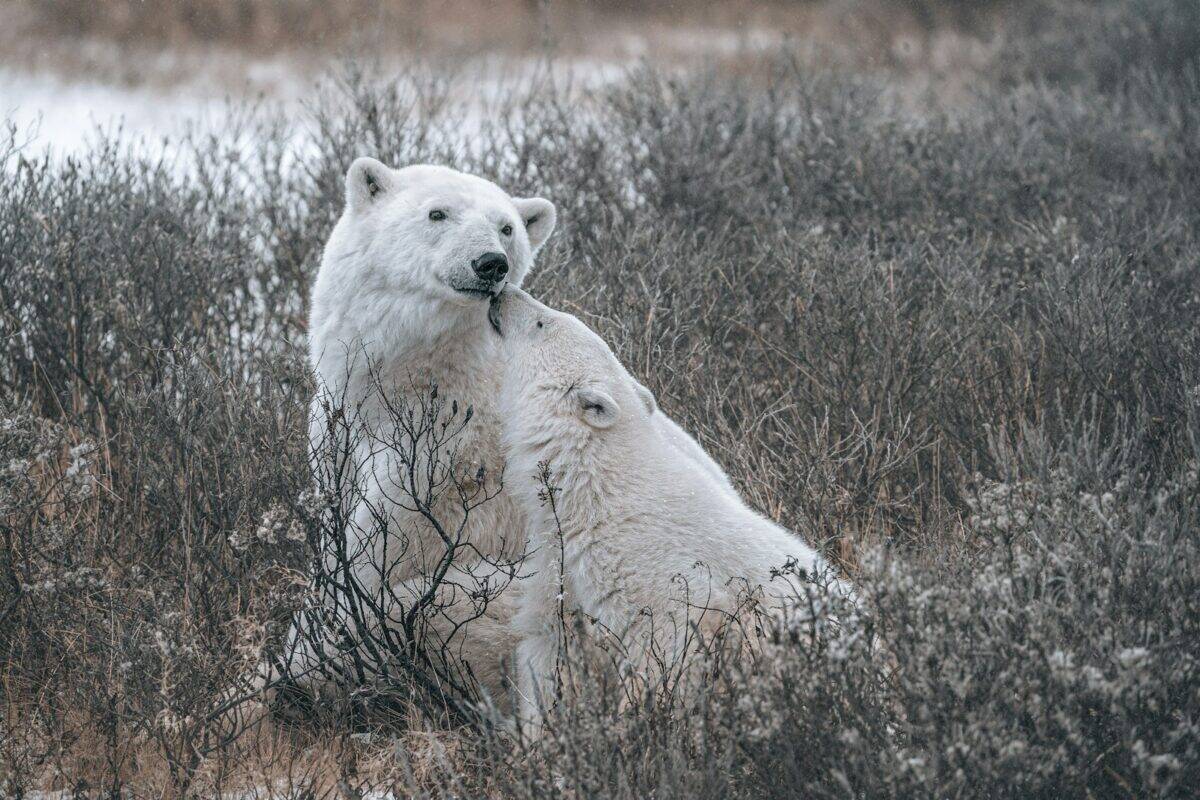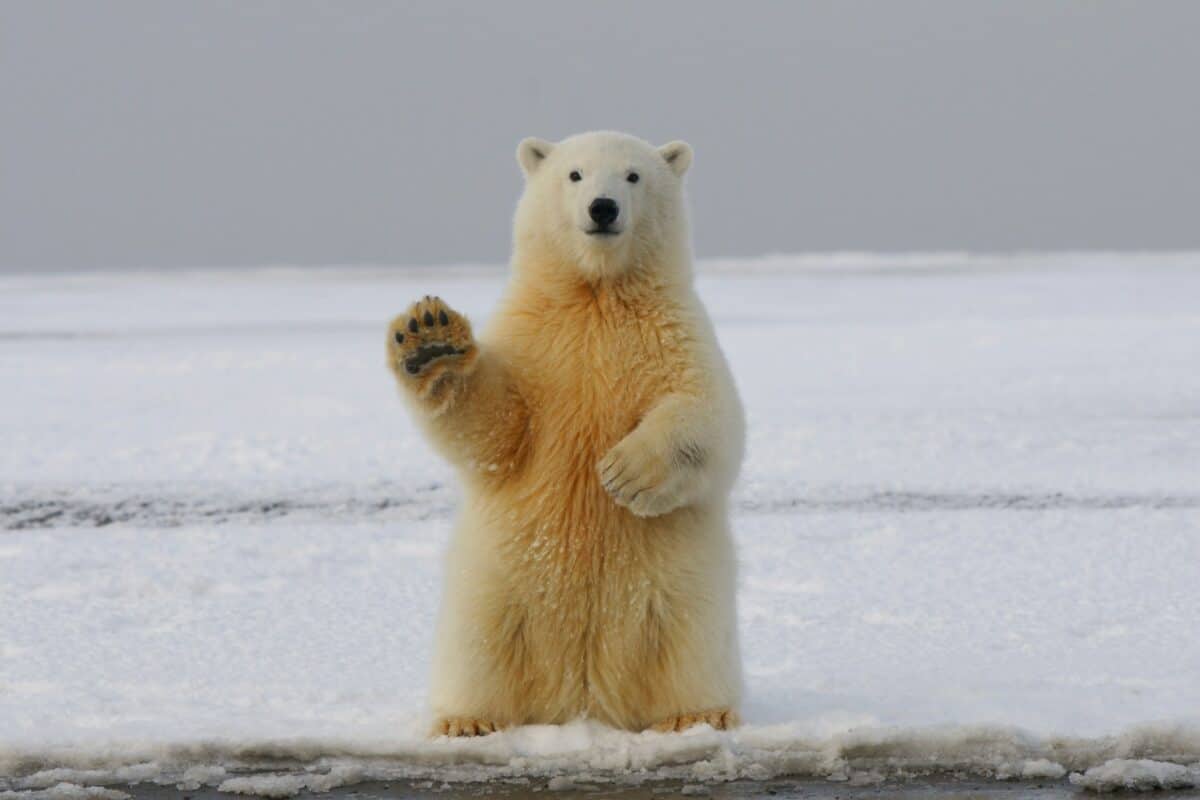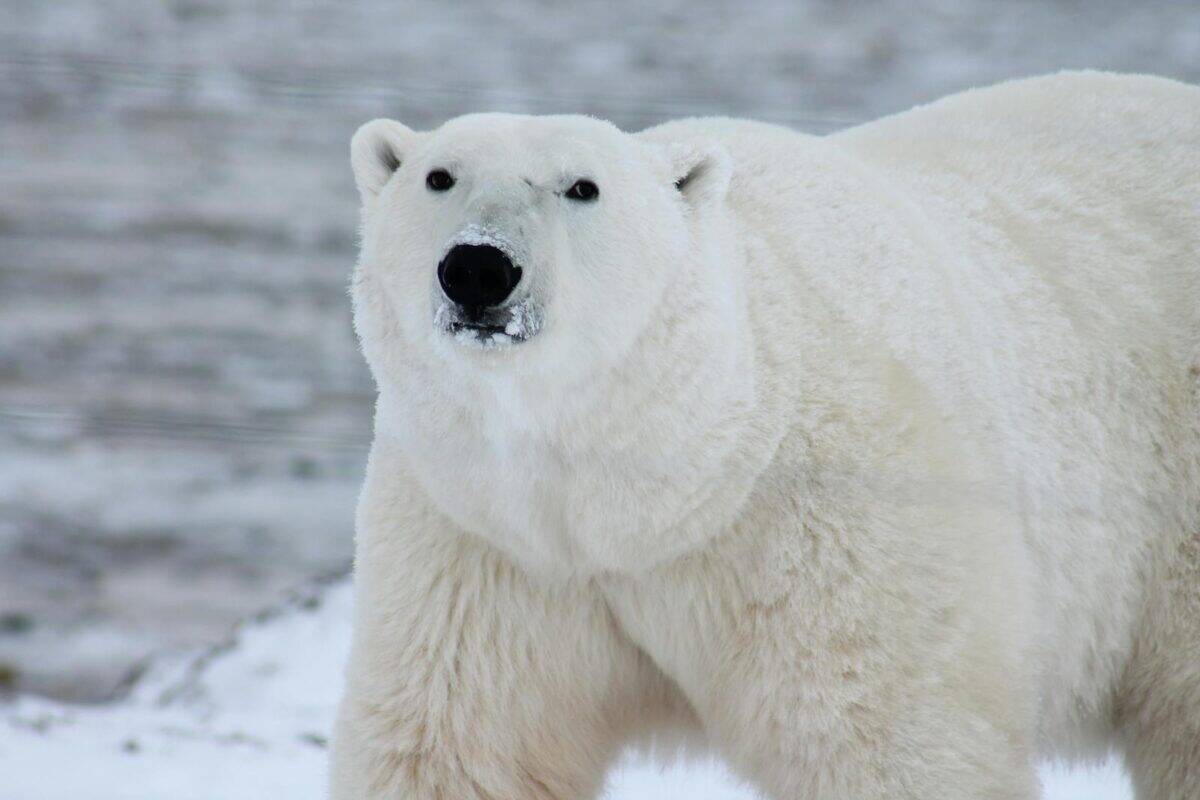The iconic white guardians of the Arctic are facing unprecedented challenges. As climate change rapidly transforms their icy kingdom, polar bears (Ursus maritimus) are demonstrating remarkable evolutionary adaptations that may help them navigate an uncertain future. These magnificent creatures, perfectly evolved over millennia for life on sea ice, are now showing signs of biological and behavioral changes in response to their rapidly shifting environment. This article explores the fascinating ways polar bears are evolving to survive in a warming world, the challenges they face, and what these adaptations might mean for their long-term survival prospects.
The Polar Bear’s Traditional Lifestyle

Polar bears evolved from brown bears approximately 500,000 years ago, developing specialized adaptations for life in the Arctic. Their traditional lifestyle revolves entirely around sea ice, which serves as their primary hunting platform. With their excellent swimming abilities, powerful forelegs, and specialized hunting techniques, polar bears became the apex predators of the Arctic ecosystem. They primarily hunt ringed and bearded seals, waiting patiently by breathing holes or stalking across the ice. Their bodies evolved perfectly for this lifestyle, with thick blubber for insulation, white fur for camouflage, and large, paddle-like paws for swimming and walking on ice. This specialized adaptation made them incredibly successful in one of Earth’s harshest environments, but also particularly vulnerable to changes in their icy habitat.
Climate Change: The Existential Threat

The Arctic is warming nearly four times faster than the global average, causing dramatic reductions in sea ice extent, thickness, and duration. Since satellite monitoring began in 1979, Arctic sea ice has declined by approximately 13% per decade. For polar bears, this means shorter hunting seasons, longer fasting periods, greater energy expenditure when swimming between increasingly distant ice floes, and overall reduced access to their primary prey. The International Union for Conservation of Nature (IUCN) estimates that without significant climate action, we could lose 30% of the global polar bear population by 2050. This existential threat is forcing polar bears to adapt rapidly or face potential extinction, creating intense selection pressure that drives evolutionary change.
Genetic Adaptations: The Brown Bear Connection

One of the most intriguing evolutionary developments is happening at the genetic level. Scientists have documented increasing hybridization between polar bears and brown bears in regions where their ranges now overlap due to climate change. These “pizzly” or “grolar” bears may possess genetic advantages for surviving in a changing Arctic. Research published in PLOS Genetics suggests that polar bears may be acquiring genes from brown bears that could help them process a more varied diet. Additionally, genomic studies have identified that some polar bear populations already carry genes that could potentially help them adapt to terrestrial living. This genetic exchange, while controversial among conservation biologists, may represent an evolutionary strategy that could help the species survive in some form, even if it means changing what we currently recognize as a “polar bear.”
Dietary Shifts: From Sea Ice to Land

As sea ice becomes increasingly unreliable, polar bears are demonstrating remarkable dietary flexibility. Traditional knowledge held that polar bears were obligate carnivores specialized for hunting seals. However, recent observations have documented polar bears consuming terrestrial food sources with increasing frequency. In Hudson Bay, researchers have observed bears foraging for berries, seaweed, bird eggs, and even grazing on vegetation. Although these food sources provide significantly less energy than fatty seal blubber, they may help bears survive during extended ice-free periods. Scientists from the U.S. Geological Survey have documented bears diving to collect seaweed and foraging in seabird colonies. These behavioral adaptations don’t yet constitute true evolutionary change, but they demonstrate the phenotypic plasticity that could eventually lead to genetic adaptations for a more omnivorous lifestyle.
Changing Migration Patterns

Polar bear populations are altering their movement patterns in response to changing ice conditions. Traditional migration routes followed the formation and melt of seasonal sea ice, but as ice patterns become unpredictable, bears are pioneering new travel corridors. Satellite tracking studies conducted by the Norwegian Polar Institute have documented bears traveling further north than previously recorded, seeking remnant sea ice in the central Arctic. Other populations are extending their time on land, with some Hudson Bay bears now spending up to 5 months on shore compared to the historical 4-month average. Perhaps most dramatically, some bears are swimming extraordinary distances—up to 400 miles in documented cases—to reach ice or land. These changing movement patterns are creating new selection pressures, potentially favoring bears with greater swimming endurance and better terrestrial foraging abilities.
Physical Adaptations: Body Changes

Preliminary research suggests that some polar bear populations may be experiencing physical changes in response to their changing environment. Scientists have documented decreasing body size in certain populations, particularly in the southern range of their habitat. While this could be attributed to nutritional stress rather than true evolutionary change, it may also represent selection for smaller body sizes that require less energy to maintain. Interestingly, some researchers have noted subtle changes in foot morphology among bears that spend more time on land, showing a trend toward the shorter, broader paws of their brown bear ancestors rather than the elongated, swimming-adapted paws typical of polar bears. Though these changes are still minor and require further study, they may represent the beginning of physical adaptations to a less ice-dependent lifestyle.
Behavioral Adaptations: Learning New Skills

Perhaps the most immediately observable changes are behavioral. Polar bears are demonstrating remarkable learning capabilities and behavioral plasticity. Bears in some regions have been documented developing new hunting techniques for catching birds, a prey type they rarely targeted historically. In Svalbard, Norway, bears have been observed using tools—rocks and ice chunks—to kill walruses, a behavior never before recorded. Cubs learn these behaviors from their mothers, creating a form of cultural evolution that can spread much faster than genetic changes. Scientists from the University of Alberta have documented bears learning to anticipate and exploit new food sources that become available as a result of climate change, such as whale carcasses washing ashore more frequently due to changing sea conditions. While these behavioral adaptations may not constitute true evolutionary change in the strict biological sense, they demonstrate the cognitive flexibility that may help the species bridge the gap until genetic adaptations can catch up.
Reproduction and Denning Changes

Polar bear reproductive strategies are also showing signs of adaptation. Traditionally, pregnant polar bears dig maternity dens in snowdrifts on sea ice or along coastlines. However, as warming temperatures make traditional denning areas less reliable, bears are pioneering new denning locations. A study published in the journal Polar Biology documented bears denning farther inland and at higher elevations than previously recorded. Perhaps most significantly, researchers have observed changes in the timing of denning, with bears entering dens later and emerging earlier as winter seasons shorten. This compressed denning period could have significant implications for cub survival and may be driving selection for bears that can successfully raise cubs under these challenging conditions. Some scientists speculate that we may eventually see changes in gestation length or metabolic adaptations that allow cubs to develop more quickly, though such evolutionary changes would typically occur over much longer timeframes.
Population-Specific Adaptations

Not all polar bear populations are responding identically to climate change, creating a natural experiment in divergent evolution. The 19 recognized subpopulations of polar bears face different rates of sea ice loss and different alternative habitat options. Those in the southern Beaufort Sea are experiencing some of the most dramatic ice losses and showing corresponding nutritional stress and population declines. Conversely, bears in the Chukchi Sea appear to be maintaining good body condition despite significant ice loss, likely due to the highly productive waters in that region providing abundant seal populations even with reduced ice. The most interesting case may be the Kane Basin population, which is actually showing population growth as previously impenetrable multi-year ice thins enough to create better hunting conditions. These population-specific responses may eventually lead to genetic divergence between subpopulations, potentially creating distinct ecotypes with different adaptations to local conditions.
The Limits of Adaptation

Despite these remarkable signs of adaptation, scientists caution that there are limits to how quickly polar bears can evolve. Polar bears have relatively long generation times—females typically don’t reproduce until age 5-6 and then only every 2-3 years—which slows the pace of genetic adaptation. Additionally, the specialized nature of polar bear physiology means that some adaptations may be difficult to reverse or modify. For example, their digestive systems are highly specialized for processing fat, making it challenging to extract sufficient nutrition from terrestrial food sources. Their white fur, while potentially useful for camouflage in snowy terrestrial environments, becomes a disadvantage when hunting on land where brown coloration would provide better concealment. Most concerning is the unprecedented rate of environmental change—Arctic sea ice is disappearing faster than the typical pace of evolutionary adaptation in large mammals. This mismatch between the rate of change and evolutionary potential creates what scientists call an “adaptation gap” that could ultimately prove insurmountable without significant climate action.
Conservation Implications

The evidence of polar bear adaptation has significant implications for conservation strategies. Traditional conservation approaches focused on preserving habitat and minimizing human disturbances may need to be supplemented with interventions that facilitate adaptation. Some scientists propose creating protected corridors between polar bear subpopulations to facilitate gene flow, ensuring genetic diversity that could speed adaptive responses. Others suggest focusing protection efforts on “climate refugia”—areas predicted to retain sea ice longer than surrounding regions. More controversially, some researchers have proposed assisted evolution through selective breeding programs or even genetic engineering to accelerate adaptation, though such approaches raise significant ethical questions. The most effective strategy remains aggressive climate change mitigation to slow the rate of Arctic warming, giving polar bears more time to adapt naturally. Conservation policies must balance the immediate need to protect existing polar bear populations while also allowing space for the evolutionary processes that may ultimately save the species.
Future Scenarios for Polar Bears

Looking ahead, scientists envision several possible futures for polar bears based on different climate scenarios and adaptive potentials. In the most optimistic scenario, rapid climate action preserves enough sea ice habitat in the High Arctic to maintain viable polar bear populations, while bears in more southern regions develop adaptations that allow them to supplement seal hunting with terrestrial foraging during ice-free periods. In intermediate scenarios, polar bears might persist primarily in the northernmost parts of their range while becoming extirpated from southern regions, or they might evolve into a more terrestrial species with significant genetic input from brown bears. In the most pessimistic scenarios, adaptations cannot keep pace with habitat change, leading to extinction in the wild. The actual outcome will likely vary by region and will depend on complex interactions between the rate of environmental change, the adaptive capacity of different populations, and the effectiveness of conservation interventions. What’s clear is that the polar bear of the future may be quite different from the sea ice specialist we recognize today.
Conclusion

The story of polar bear evolution in the face of climate change illustrates both the remarkable adaptability of life and the unprecedented challenges posed by human-induced environmental change. While polar bears are showing encouraging signs of genetic, physical, and behavioral adaptation, the pace of Arctic warming threatens to outstrip their evolutionary capacity. The future of this iconic species will depend on our own ability to adapt our behaviors and limit climate change, giving polar bears the time they need to evolve in response to their changing world. Their journey represents a powerful reminder that evolution continues in the present day, shaped by human activities in ways that will determine which species persist and which disappear in the coming centuries. The polar bear’s struggle to adapt is not just their story—it’s a reflection of the broader ecological transformations reshaping our planet in the Anthropocene era.
- Do Blue Lobsters Really Exists? - August 22, 2025
- The Nine-Tailed Fox: Mythical Shapeshifter of East Asia - August 22, 2025
- Polar Bears Are Evolving to Survive - August 22, 2025

